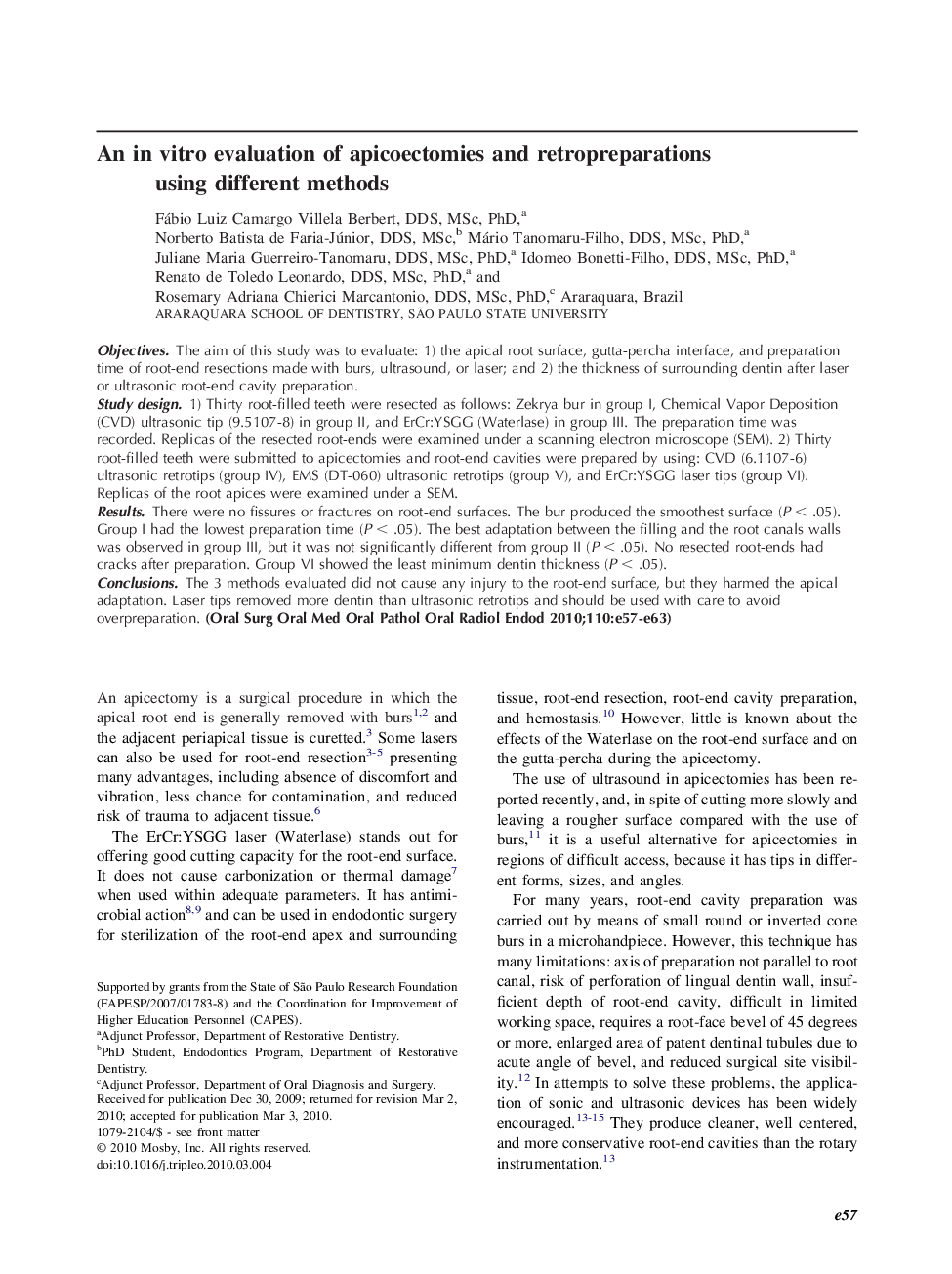| Article ID | Journal | Published Year | Pages | File Type |
|---|---|---|---|---|
| 3167330 | Oral Surgery, Oral Medicine, Oral Pathology, Oral Radiology, and Endodontology | 2010 | 7 Pages |
ObjectivesThe aim of this study was to evaluate: 1) the apical root surface, gutta-percha interface, and preparation time of root-end resections made with burs, ultrasound, or laser; and 2) the thickness of surrounding dentin after laser or ultrasonic root-end cavity preparation.Study design1) Thirty root-filled teeth were resected as follows: Zekrya bur in group I, Chemical Vapor Deposition (CVD) ultrasonic tip (9.5107-8) in group II, and ErCr:YSGG (Waterlase) in group III. The preparation time was recorded. Replicas of the resected root-ends were examined under a scanning electron microscope (SEM). 2) Thirty root-filled teeth were submitted to apicectomies and root-end cavities were prepared by using: CVD (6.1107-6) ultrasonic retrotips (group IV), EMS (DT-060) ultrasonic retrotips (group V), and ErCr:YSGG laser tips (group VI). Replicas of the root apices were examined under a SEM.ResultsThere were no fissures or fractures on root-end surfaces. The bur produced the smoothest surface (P < .05). Group I had the lowest preparation time (P < .05). The best adaptation between the filling and the root canals walls was observed in group III, but it was not significantly different from group II (P < .05). No resected root-ends had cracks after preparation. Group VI showed the least minimum dentin thickness (P < .05).ConclusionsThe 3 methods evaluated did not cause any injury to the root-end surface, but they harmed the apical adaptation. Laser tips removed more dentin than ultrasonic retrotips and should be used with care to avoid overpreparation.
